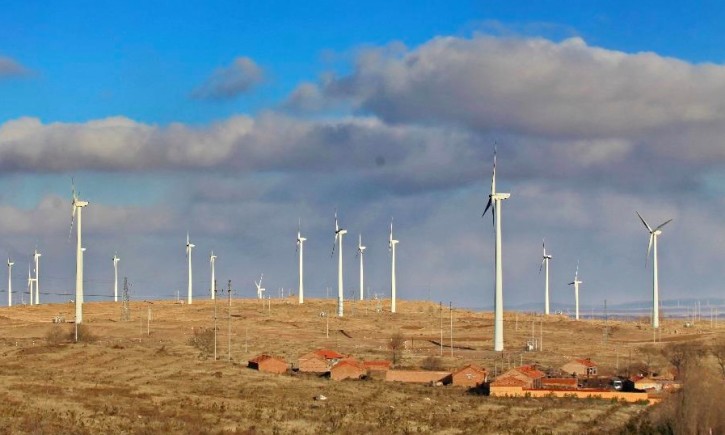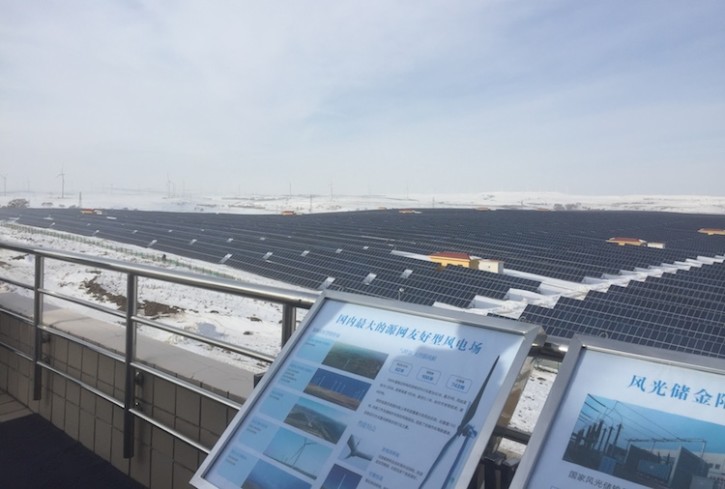By Anders Hove

The recently reported decline in China’s electricity consumption has sparked worries of further economic slowdown among China watchers. National electricity consumption declined 0.2% and industrial electricity use went down 1.4%. But a deeper look at the numbers hints at a more promising picture of an economy and energy sector in transition. What’s more, realities on the ground in the heavily industrialized Jing-Jin-Ji region suggest that local governments are working hard to transform their economies to more sustainable, efficient models.
First, a look at the numbers: Electricity statistics show electricity generation growth of only 0.5%. Secondary industry consumption (the largest consumer, which includes most of industry including manufacturing, steel, cement, glass, textile, and so on) slipped 1.4%, while tertiary industry (which includes light industry, information technology, and many services) is up 7.5% and urban residential electricity use is up 5%. These figures appear to confirm a gradual economic transition underway in the economy towards services and consumption sectors.
Other economic statistics show that heavy industry has reduced production in 2015, with steel down 8.8%, cement 9.9%, and coal 5.8%. Thus, the electricity statistics appear to also show the results of policies that aim to gradually reduce the share of direct coal combustion for industrial manufacturing while increasing the share of electricity, which has relatively lower emissions than direct coal combustion. However, at the same time, coal capacity and investment in new coal capacity all grew strongly in 2015, rising 8% and 22% respectively. Some of these investments have the potential to become stranded assets—projects that have to be closed down prematurely.
So how is this all playing out on the ground? Colleagues and I recently visited Zhangjiakou and Qinhuangdao, in Jing-Jin-Ji’s Hebei province, and we saw how officials in both cities are highly motivated to find ways to transform their economies and clean up pollution. Both cities are working toward comprehensive clean energy strategies.

Zhangjiakou, which will co-host the 2022 Winter Olympics with Beijing, is pursuing an ambitious plan to increase both output and use of renewable energy, especially wind and solar. Local officials told us that the Zhangjiakou region already has 7.36 GW of wind capacity and 700 MW of solar PV, but they explained that much of that renewable energy is wasted. Renewable energy far outpaces the region’s peak electricity demand (or load) of only 1.85 GW. The area also has substantial coal power capacity. Three State Grid transmission lines only carry a maximum of 5.5 GW of capacity, which is often occupied by power flows between other provinces. Hence Zhangjiakou is already facing significant curtailment, or wastage, of renewable energy—times when the grid cannot absorb locally-generated power from wind and solar.
The city plans to have 20 GW of wind and solar by 2020 and 50 GW by 2030, and to source 55% of the region’s electricity from renewable energy. But the main challenge is how to use that energy. The region plans to boost renewable energy consumption through a variety of strategies, including electric vehicles, industrial hydrogen production from wind power, and data centers powered partly by renewable energy. All new buildings will be heated with renewable energy—which would have a major impact on pollution control, considering the entire region’s air quality has historically suffered due to reliance on coal heating.
During a separate trip to Qinhuangdao, also in northern Hebei and home to one of the country’s largest coal import terminals, we learned about the local government’s effort to promote the use of passive house technology and heat pumps to reduce emissions from coal winter heating. Massive wind turbine blades for Zhangjiakou’s burgeoning renewable capacity are also manufactured in Qinhuangdao. Local officials talked about Qinhuangdao’s relatively clean air as an attraction. But clean air largely depends on stabilizing or reducing regional coal emissions. The city hopes to accomplish this by centralizing coal heating, shifting towards liquefied natural gas (LNG) for industry, and promoting biomass energy from crop waste.
These two cities are pioneering a sustainable economic transition that could be implemented all over China. But challenges and inconsistencies remain. The government will need to rebalance misguided incentives, for example. Better policies to reduce financing for coal plant construction, meanwhile, will be necessary as part of stronger regional energy and economic planning. Electricity market reform, combined with putting a price on carbon emissions, such as through the national emissions trading system proposed for 2017, can also play a significant role in encouraging this regional transition away from coal and emissions-intensive manufacturing.
While energy and electricity statistics bear close scrutiny for the window they offer on macro-economic changes, observers shouldn’t lose sight of the energy transition underway at the local level. As the experiences of these two cities show, local and regional governments are working hard to transition away from coal towards cleaner energy and energy efficiency, and pursuing diverse strategies for doing so. Thus, old relationships between coal or electricity use on one hand and growth figures on the other are now shifting, and that’s potentially a positive for the country’s environment and long-term prosperity.
Anders Hove is Associate Director of Research at the Paulson Institute.


